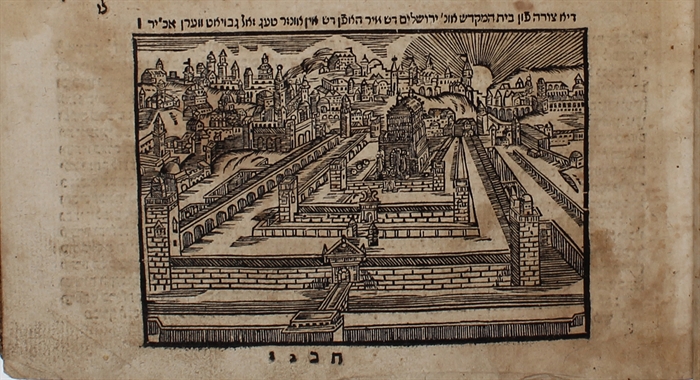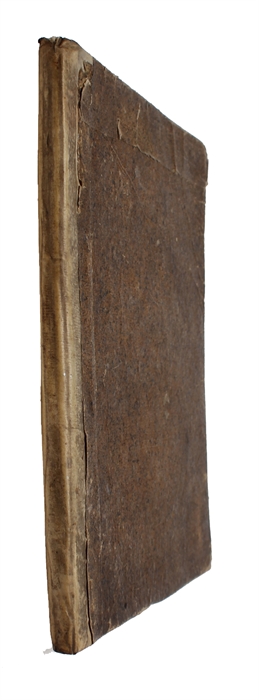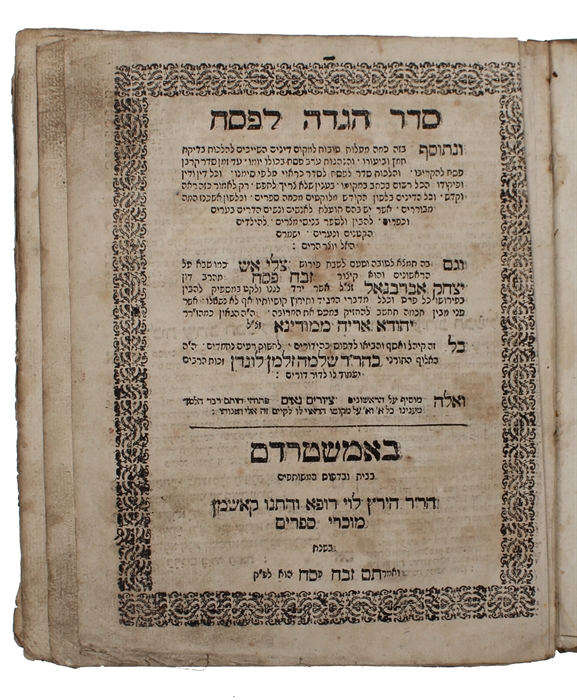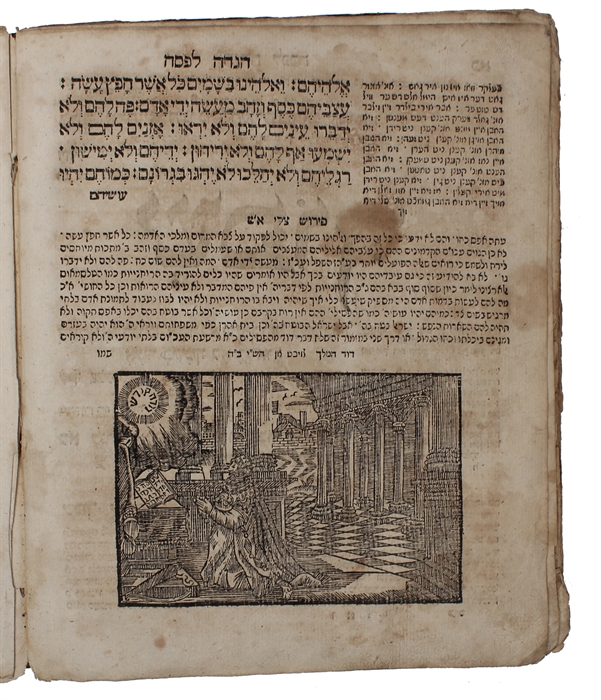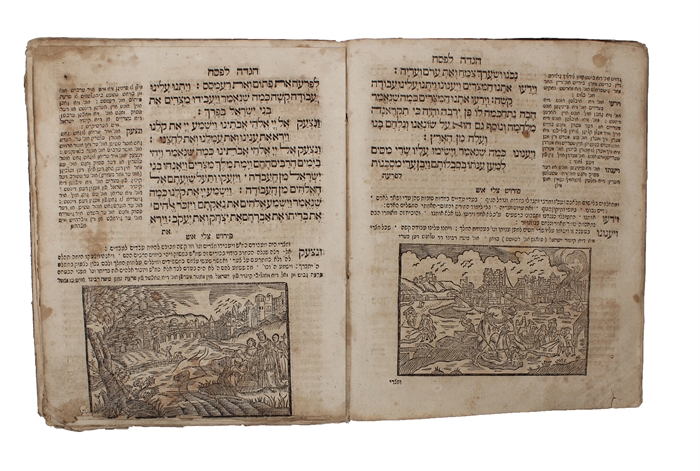RARE ILLUSTRATED 18TH CENTURY HAGADDAH
HERZ LEVI ROFE E KOSMAN (BEN YOSEF) (Edt.) (& RAV YEHUDA ARYEH LEON MODENA (i.e. LEONE DI MODENA) ).
Seder Haggadah le- Pessach (Hebrew). (Containing the commentery Tzeli Esh by Leon of Modena, translated into Yiddish by Solomon ben Moses Raphael Zalman London).
Amsterdam, 1765.
4to. Contemporary vellum spine with marbled paper covered boards. Simple and worn, but tight and functional. Split in the inner stitching, but leaves still attached. With brownspotting and signs of use throughout. Small tears to some blank margins. Two leaves more worn to the lower margin, just touching one engraving and a line of text, resulting in very minor loss. Titl-page within woodcut printed border. Illustrated throughout with 14 large (7,7 x 11,5 cm) woodcut illustrations and 13 large illustrated woodcut initials (ca 3,2 x 3,2 cm). 33 ff.
In spite of its signs of frequent use, the book is in very good condition for this type of work, which is usually in extremely poor condition.
A beautifully illustrated and very rare 18th century Haggadah, setting forth the order of the Passover Seder; fully complete, with 14 large woodcut illustrations inspired by the "Amsterdam Haggadah" from 1695. The commentary by Rav Leone Modena found in this Hagadah, the famous “Tzeli Esh,” is an abbreviation of Don Isaac Abrabanel’s voluminous commentary “Zevach Pesach” first published during the author’s lifetime in Constantinople in 1505. The translation of the “Tzeli Esh” into Yiddish is by Solomon Zalman ben Moses Raphael London (1661-1748), author and translator, who was active between 1709 and 1735. Leon de Modena (or Yehuda Aryeh Mi-Modena) (1571-1648) is considered the most famous Venetian Rabbi of the 17th century. He was a Jewish scholar born in Venice, into a family of migrants from France, after the French expulsion of Jews. He was well respected, but his reputation within traditional Judaism suffered both due to his criticism of emerging sects within Judaism, but also because of his addiction to gambling and seeming lack of stability. He is famous for his criticism of the mystical approach to Judaism and his attacks on the Kaballa, but his international fame mainly rests upon him being the interpreter of Judaism to the Christian world. He was the first since Josephus and Philo to write a Jewish text to non-Jewish readers (Historia de gli riti Hebraici, 1637), which was widely read by Christians and extremely influential. The editor Naftali Hertz ben Alexander Ziskind Levi Rofe of Emden “set up his press in Amsterdam in 1726. He complemented his printing equipment with that purchased from the Isaac Templo press after it was closed down. He was a physician by profession, as evidenced by his moniker Rofe. He was granted title of doctor of medicine from the University of Harderwijk in 1716. He pursued his medical practice, as well as printing and bookselling. He was a member of a small group of Jewish intellectuals interested in scientific disputes. He tended to publish alone as well as in cooperation with others, but above all with his son-in-law Kosman ben Joseph Baruch, who was also involved in the book trade. Their cooperation lasted from 1742 to 1766, and resulted in many works being published.” (The Bezalel Narkiss Index of Jewish Art, The Center for Jewish Art)
Order-nr.: 60978

